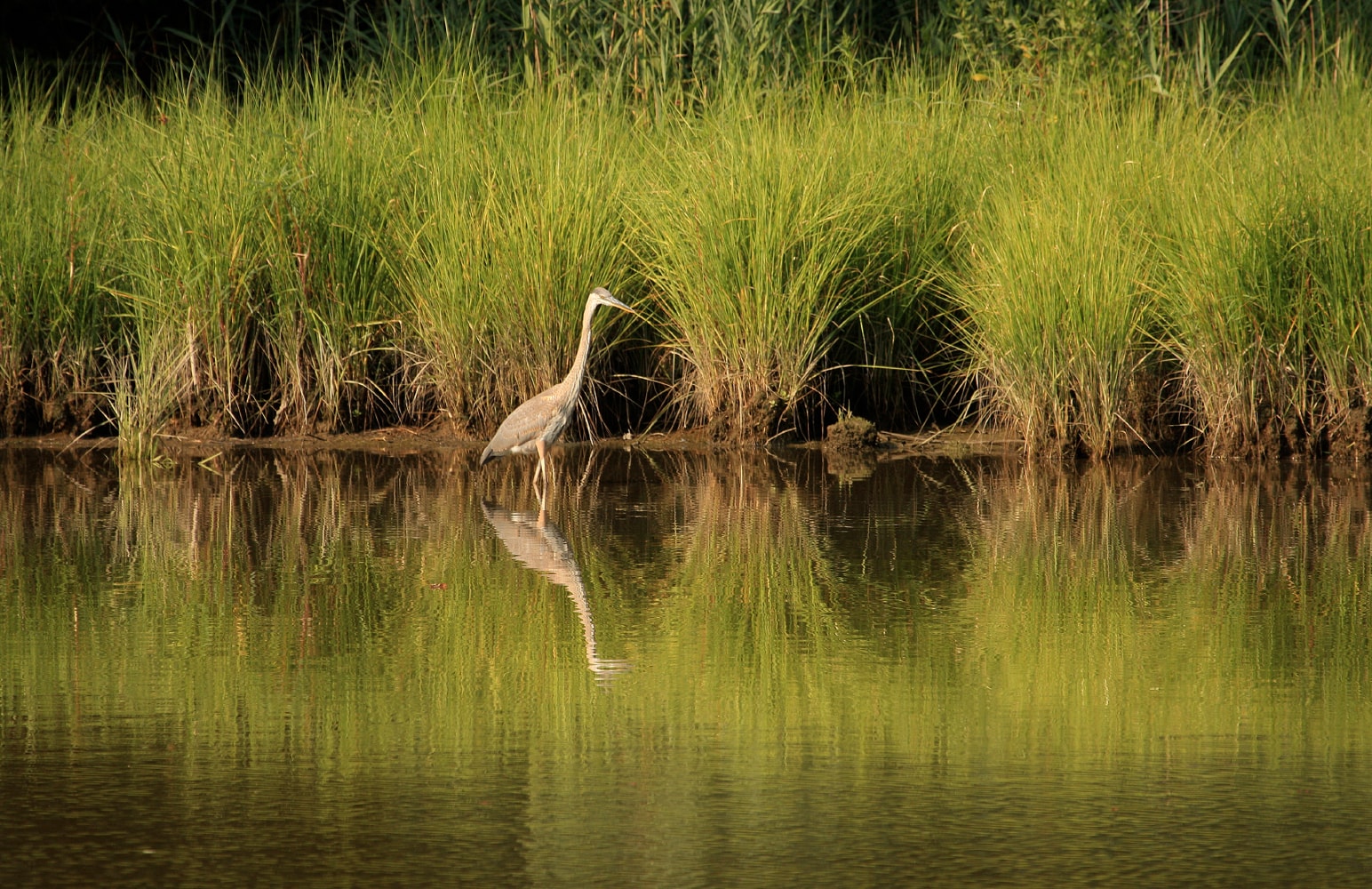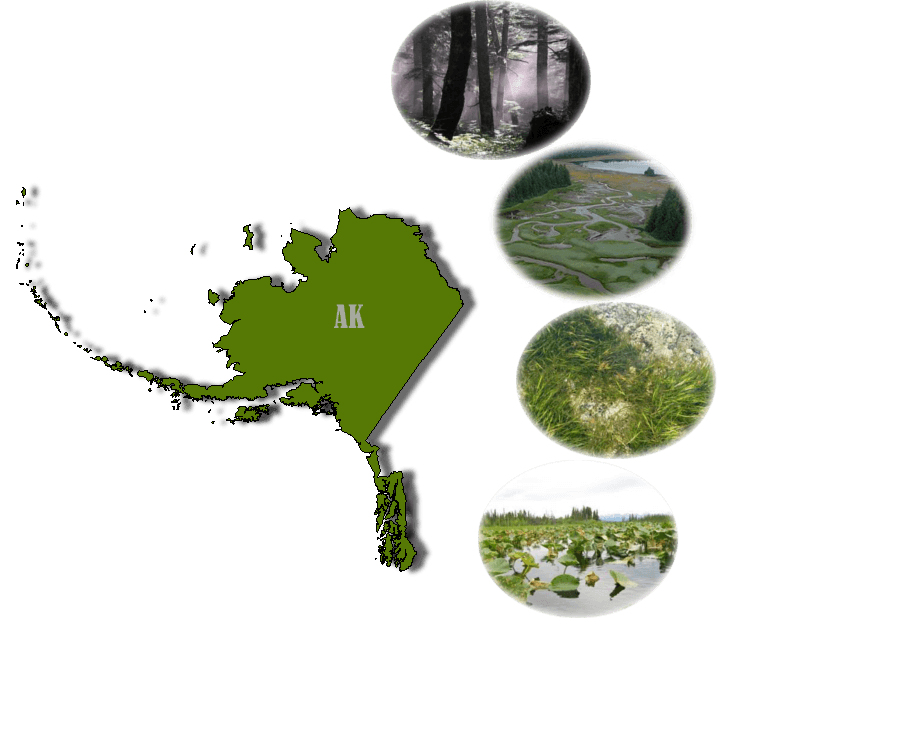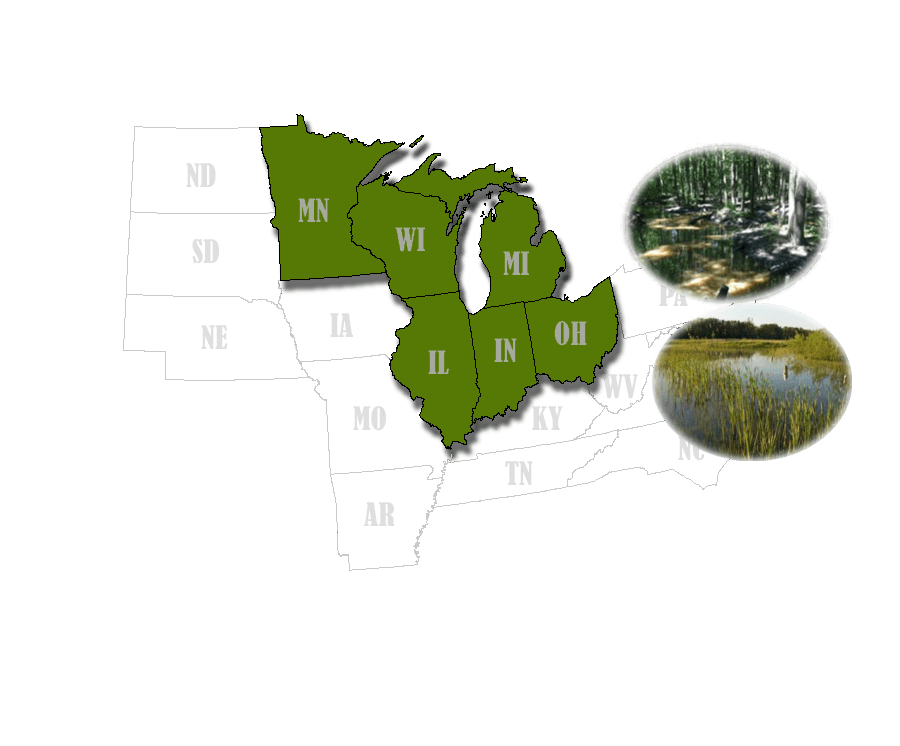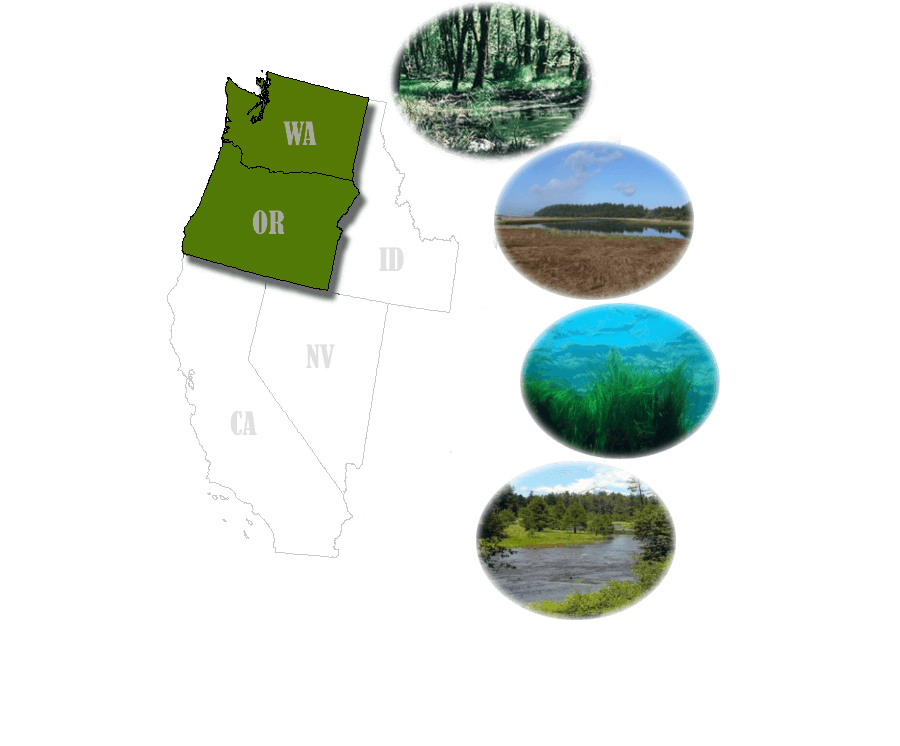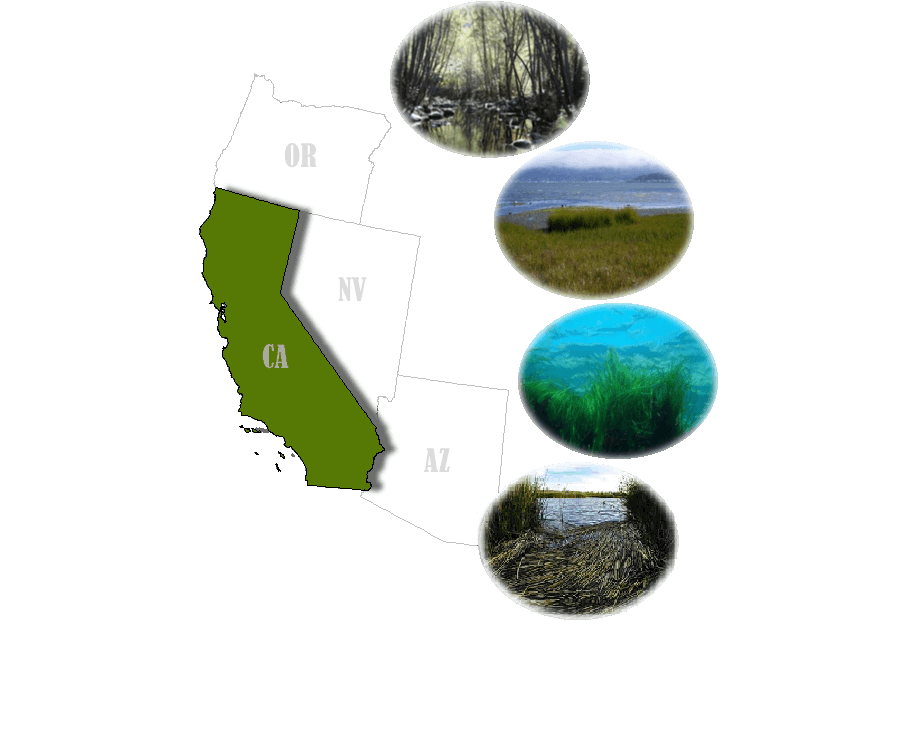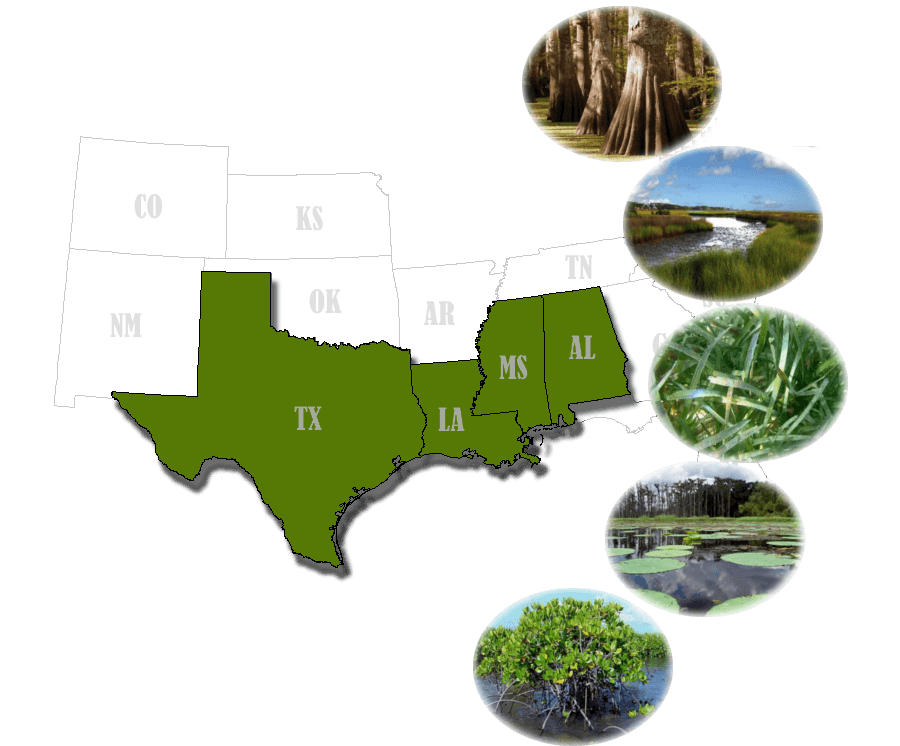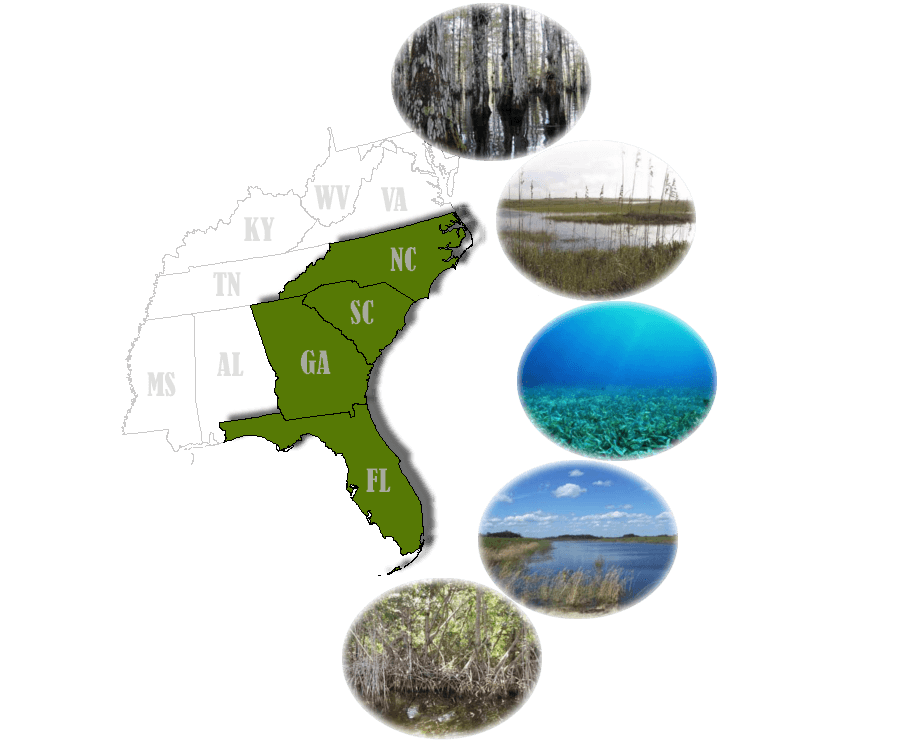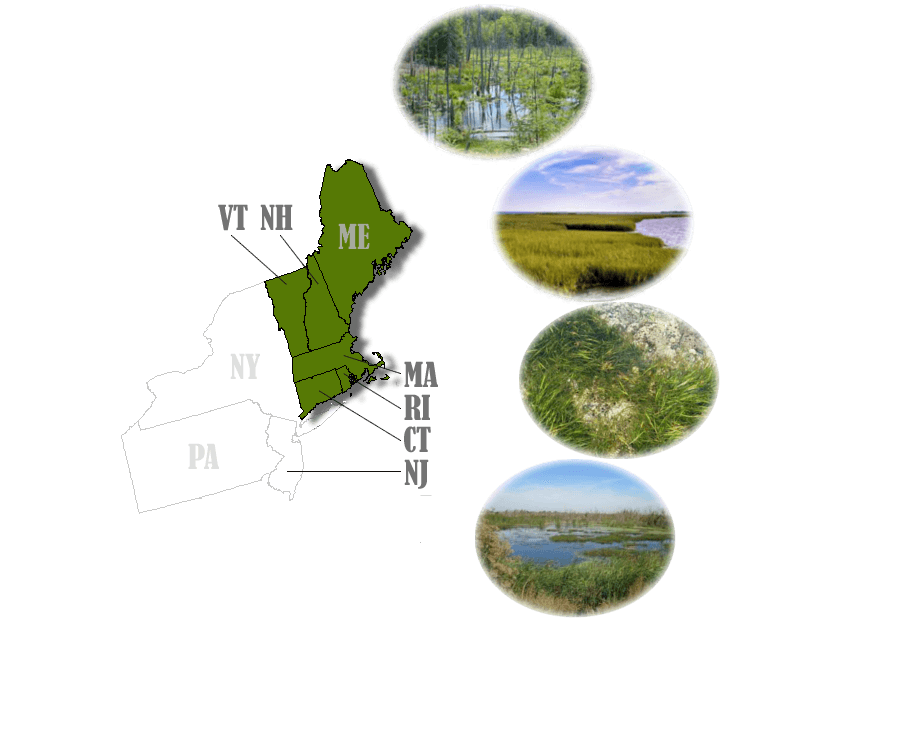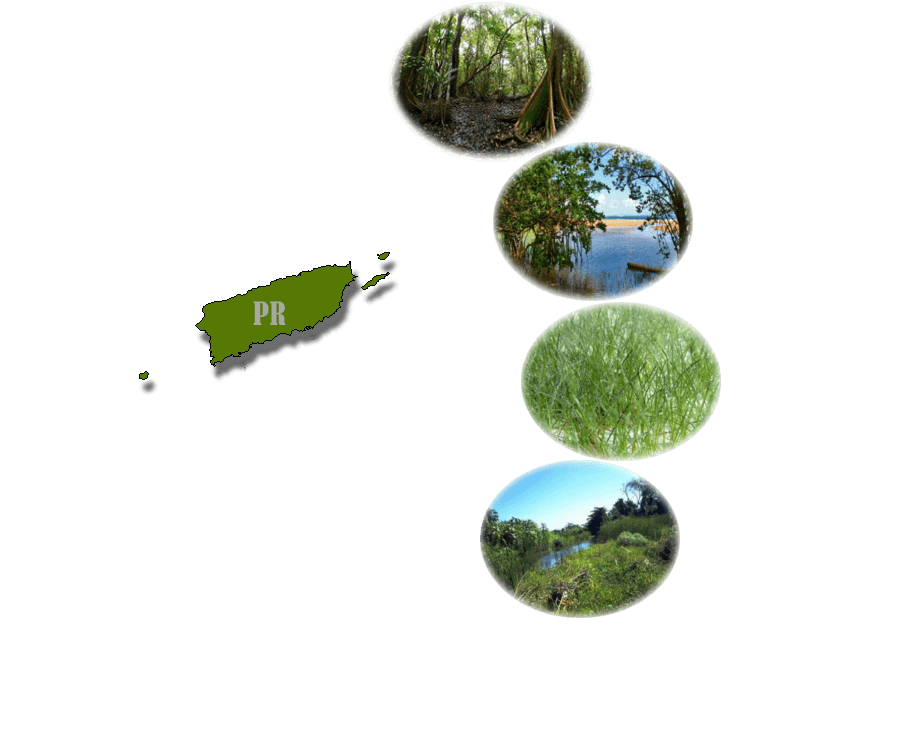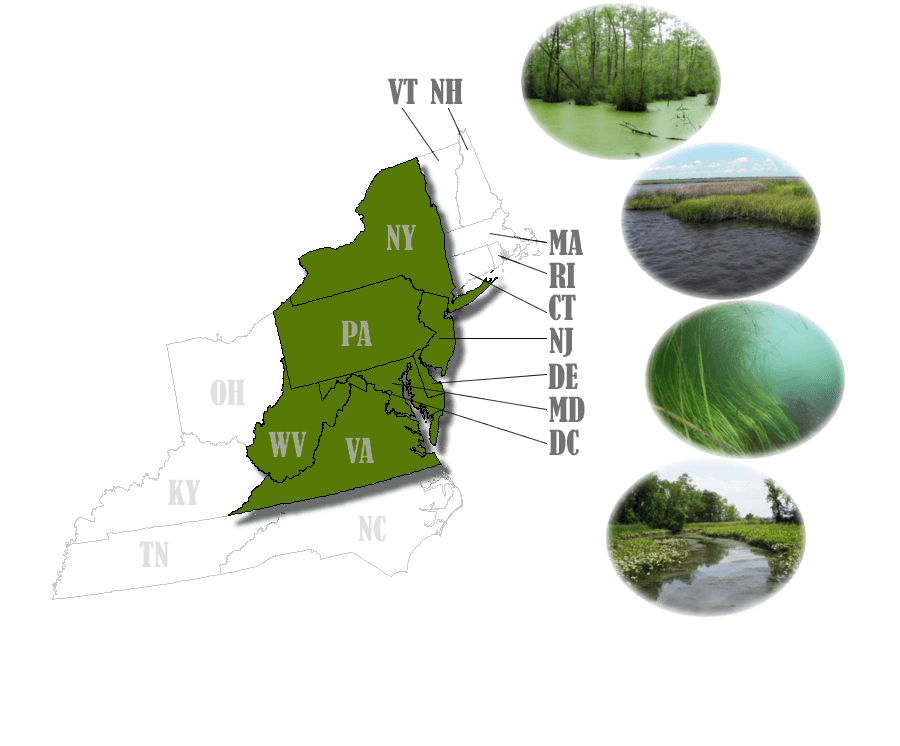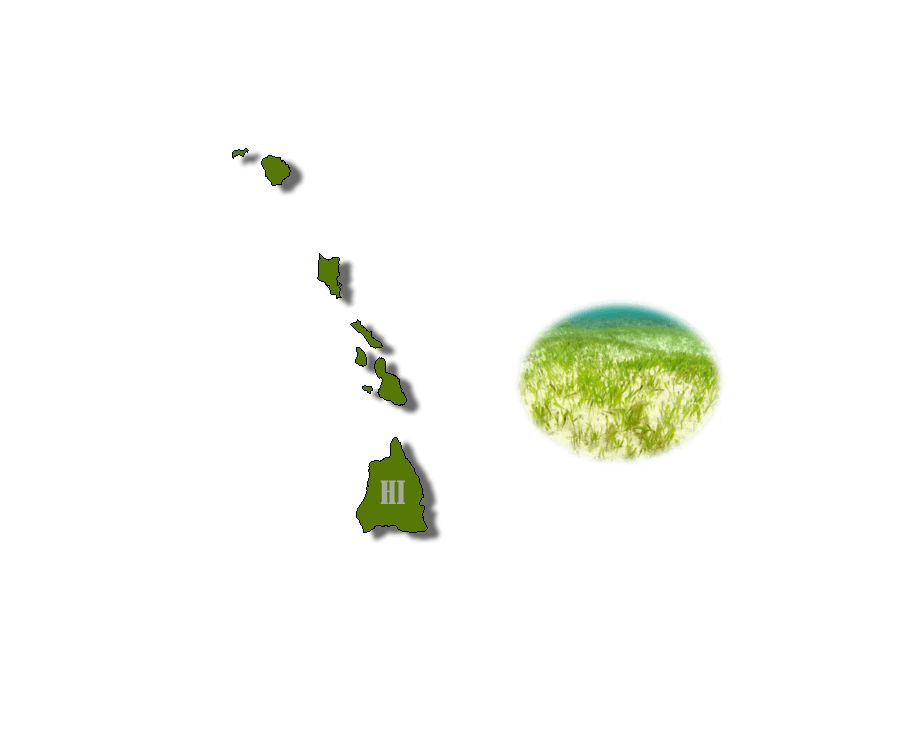What's Wild In Our Wetlands?
Explore wetlands in coastal states and some of the fish found there.

Wetlands in Alaska
Alaska contains approximately 273,000 square miles of wetlands – about 43% of the state’s surface area. Large complexes of salt marshes and mud flats occur along the coastal areas of the Beaufort Sea, Chukchi Sea, Bering Sea, and Gulf of Alaska. Significant wetland areas also occur on the major river deltas of Alaska, including the Yukon-Kuskokwim Delta, the Coleville River Delta, the Copper River Delta, and the Strikine River Delta. The value of wetlands for fish is well-established for Alaska’s coastal wetlands, which provide feeding areas and nursery grounds for salmon and other species.
Wetlands in the Great Lakes
The Great Lakes Region is home to the largest freshwater system on earth, containing 18% of the world’s freshwater. Along the shoreline and edges of the lakes and rivers there are more than 535,583 acres of wetlands that support one of the largest freshwater commercial and recreational fisheries in the world. Water levels within and among Great Lakes wetlands vary substantially, resulting in a variety of wetland plant and animal communities with high biodiversity.
Wetlands in the Pacific Northwest
Oregon and Washington have similar climates, but their wetlands differ due to differences in each state’s landscape. The steep slopes of Oregon's Coast Range mountains extend to the Pacific Ocean along much of the coast, leaving little area for wetland formation. Thus, coastal wetlands are confined mainly to areas of accumulated sediment near the mouths of rivers and to the dune regions that have formed where the Coast Range front is distant from the ocean. Washington’s coast is dominated by Puget Sound, a complex of estuaries that cover almost 14,000 square miles. Like Oregon’s coastal areas, the shoreline of Puget Sound tends to be steep, limiting the areas where wetlands can form. Thus, about half of the wetlands in Puget Sound have formed on the deltas and floodplains of the rivers that flow into Puget Sound.
Wetlands in California
California’s wetlands stretch from the northern border of the state south to San Diego, with the largest expanses in San Francisco Bay, the Central Valley and Delta, the Klamath Basin, and Humbolt Bay. At one time California contained an estimated three to five million acres of wetlands, but about 90% of those wetlands have been lost to industry, agriculture, and development. The remaining wetlands are of many types but they are dominated by salt marshes and freshwater marshes. California once had thriving populations of sardines, smelt, sole, flounder, and other fish that depended on wetlands, but now only a few species are caught commercially: Pacific herring, Bay shrimp, Delta crayfish, and – in restricted amounts – salmon.
Wetlands in the Gulf of Mexico
The Gulf of Mexico coastline stretches over 1,500 miles from the tip of Florida west to the border of Texas and Mexico. The Gulf of Mexico region is home to a diverse array of coastal wetlands, from Florida’s mangroves and freshwater Everglades, to Louisiana’s swamps, marshes, and bottomland hardwood forests, to Texas’s wet prairies and estuarine marshes, about 15.6 million acres of wetlands in all. These wetlands supply the world with oysters, shrimp, crabs, crawfish, menhaden, and snapper. Coastal wetlands also help protect communities from the damaging effects of coastal storms.
Wetlands in the South Atlantic
Extensive floodplains, wide coastal plains and abundant rainfall have created rich and diverse wetlands in the south Atlantic region, where wetlands make up about 22% of the combined land area of the states. Wide areas of salt marsh stretching miles inland from the coast are the dominant type of saltwater wetland, and extensive forested wetlands are the dominant type of freshwater wetland. South Atlantic wetlands play an integral role in the region's quality of life, supporting diverse and plentiful fish and providing economic livelihood and recreation for millions of people.
Wetlands in the North Atlantic
The north Atlantic area contains countless coastal rivers, bays, coves, and harbors that support many kinds of wetlands and fish that use them seasonally or spend their entire lives there. Many fish using wetlands migrate from one wetland to another, spending different parts of their life cycles in many different types of wetlands. Alewife, blueback herring, menhaden, bluefish, flounder, and even lobster depend on wetlands for food, shelter, spawning, and nursery habitat.
Wetlands in the Caribbean
Mangroves and seagrass beds are the dominant wetlands features along the coast in the Caribbean, with smaller areas of fresh marsh and forested freshwater wetlands as well. There is often a close association between mangrove stands, seagrass beds, and coral reefs in the Caribbean. Together, these habitats provide living space, food, protection, spawning, and nursery areas for as many as 500 different species of fish and shellfish in the U.S. Caribbean region.
Wetlands in the Mid-Atlantic
Wetlands in the mid-Atlantic region are an important resource not only to local residents, but also to others who eat or use products produced by these wetlands. At the center of the region is the Chesapeake Bay with its 1.5 million acres of marshes, forested wetlands, and seagrass beds. Just up the coast, Delaware Bay and Barnegat Bay also contain large amounts of wetlands. Oysters, blue crabs, and striped bass are only a few of the diverse species that depend on mid-Atlantic wetlands and are shipped all over the country for people to enjoy.
Wetlands in the Hawaiian Islands
Because of their steep volcanic sides, the Hawaiian islands do not have wetlands to the extent that other coastal states do. A wetland type that does occur is seagrass beds, which can be found in some shallow water areas around the islands, providing a buffer between land and coral reefs father offshore. These seagrass beds are important nursey and feeding grounds for numerous fish as well as the endangered green sea turtle. They are under threat from invasive algae and coastal development.
Click the bubble to learn more about this wetland and the fish that can be found there.
